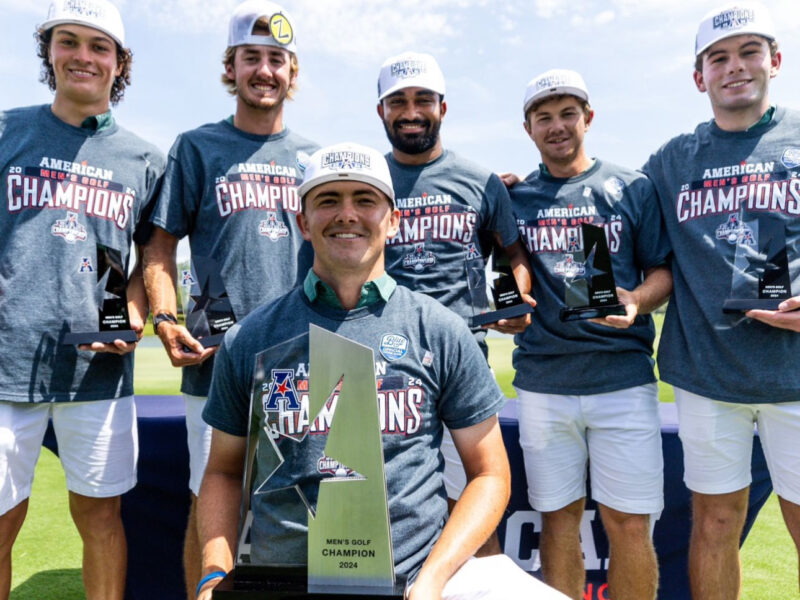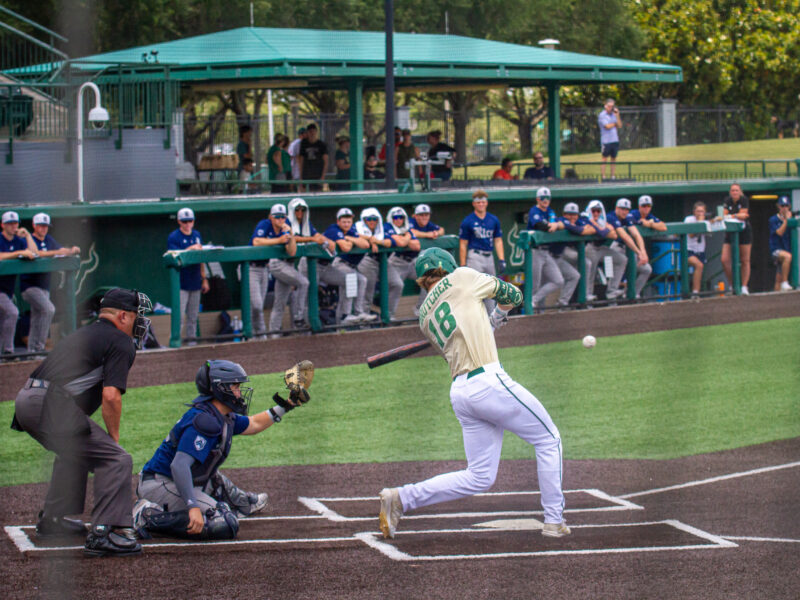Although it’s technically 35 years old, the American Athletic Conference (AAC) was reorganized in 2013 with an entire new look. In fact, the only original members are the Connecticut Huskies. Even the USF Bulls were added to the roster.
After the Big East Conference was dissolved, the AAC was deemed the successor while accepting seven new schools to the conference in 2013. As of today, the conference has 11 members but is expecting to add four more by 2015.
The former Big East commissioner, Mike Aresco, now leads the AAC into becoming one of the power conferences in all of college sports.
In the two years since the AAC began formally operating, Aresco has already seen success within the conference. In 2013, the University of Central Florida won a major bowl game in college football and the Huskies’ basketball teams won national championships.
“We think we’re number six,” Aresco said, referring to the “power five” conferences in college football. “I think we have a powerful group, and I think it’s going to get better.”
The AAC lost its automatic bid to one of college football’s major bowl games with the birth of the College Football Playoffs, a playoff selection committee and the loss of the Bowl Championship Series (BCS), but Aresco is confident the change is for the better and schools within the conference can make it to the big stage once again.
“The great thing about it is you’re not going to have computers, you know, being very controversial,” Aresco said. “That was really the Achilles heel, I think, of the BCS system because you had some unusual results. This committee will look at strength of schedule, which is really important, because that’s what our league is all about.”
Also in 2013, the AAC agreed to a six-year $130 million contract with ESPN to nationally televise the conference’s games. Games will be broadcasted throughout various ESPN platforms, such as ESPN2, ESPNEWS, etc.
“Every game is pretty much on T.V.,” Aresco said. “CBS Sports Network does a game of the week, other than that, everything is on ESPN, three ABC nationals. This is even better exposure, I think, than what USF got all year in the old Big East. The exposure in the T.V. deal is terrific.”
With lucrative million-dollar contracts rolling into universities for television deals, head coaches and training facilities, the college athlete remains unpaid. Heisman winners and contenders, as well as other non-high profile players, have been widely scrutinized and punished for taking money for selling their autographs or likeness.
“The problem with something like that and I’ve always felt that with endorsements and things to that nature, ‘How do you draw a line?’,” Aresco said. “Hypothetically, what if a school has a business that’s willing to pay you $1 million for an ad? Well, that’s recruiting. The one thing about Olympians and the Olympic team is they can do endorsement deals, they can do various things, the ametur model there has changed dramatically, but they aren’t recruiting against each other.”
But student athletes have spoken out against schools and conferences stating that they don’t see even enough food at times and that colleges are exploiting them to make millions.
“When you tour the facilities of USF or some of the other schools, the amount of money and effort, the notion that college athletes are exploited, to me, is ridiculous,” Aresco said. “How many students would love to get out of school debt free, especially when it might cost anywhere from $100,000-$200,000 to go to school and to have all the other benefits? The amount of money spent on nutrition, weight rooms, on training, counselling… I don’t think we’ve necessarily done a great job, as a college community, of talking about where that money is going.”
Aresco is awaiting the basketball season to begin, where the conference’s team’s rankings should be better than the 2014 football year. Fans will be able to witness the growth of the AAC from it’s early stages and only time will tell if the conference is moving in the right direction.
Aresco believes USF is making the necessary strides to grow with the conference.
“I think it’s absolutely on the rise, I don’t think there’s any question about it,” Aresco said.


